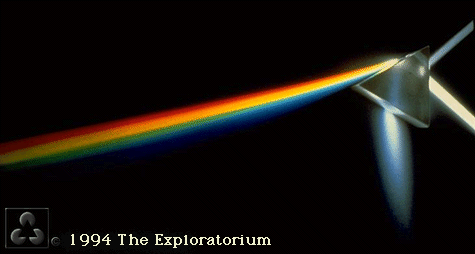In reading the Octane manual it appears that Octane models diffraction based on Cauchy's two-term method:
n(λ) = A + B/λ2,
where (n) is the refractive index, (λ) is the wavelength, and the coefficients (A) and (B) are specific for different types of transparent media as determined from experiment. As examples:
In the graph below, refractive index is plotted against wavelength for a specific type of glass, BK7. It is clear then that refractive index as a single value has no meaning unless it refers to a specific wavelength. But, in looking at the (A) values in the table, these are strikingly similar to refractive indices when published as single values for an entire material, regardless of wavelength. So what is going on here?! In one breath, science tells us refractive index is wavelength dependent, and in the next, it is telling us that refractive index is a single value for a given material, INDEPENDENT of wavelength!
If we take the table's (A) value for Borosilicate glass (BK7), and use that as the BASE VALUE for refractive index in the BK7 graph below, then, it appears that TRUE refractive index is a known base value "index" PLUS some other term that is dependent on wavelength. Indeed, the Cauchy equation is a sum of a constant coeffecient (A) plus a second term that is dependent on wavelength. Therefore, the indicated red line shows the correct position for this lower "index" value. This line, then, is the asymptotic lower boundary for the blue curve as wavelength approaches infinity.
This can only mean that the term, "refractive index" is confusingly used in two different contexts...A classic case of science not being very scientific
So, Octane apparently uses the less stringent use of the term, "Index" when it would be more accurate to use the term, "Coefficient (A), without ambiguity. But Octane's usage would seem legitimate since (A) really does represent an index, or reference value from which all others are based. However, in the case of optics, the term can too easily be mistaken for refractive index as a wavelength dependent value.
In the graph, a dashed green line is also present. This curve represents the true equation that much more accurately describes the behavior of light in nature, especially outside the visible light range. This equation (Sellmeier's Equation) is however a much more complex equation with four terms, three of which are more complicated than the second term in Cauchy's equation. That represents far more computation time in a very iterative algorithm where optimization is very important. Also, Octane is only concerned with the visible light range. In this range, both the Cauchy and Sellmeier equations agree very closely.



